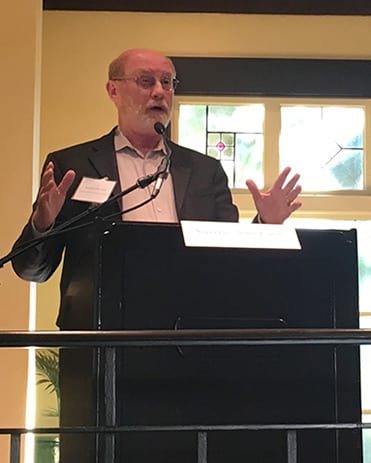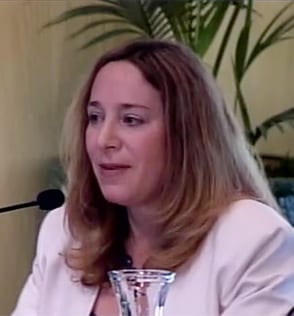By Andrew Cohen

Two things stood out during a packed symposium on the California Coastal Act that Berkeley Law hosted November 17: a palpable sense of urgency about dire challenges facing the coast, and a fiery resolve to overcome them.
The event dissected the 40-year history of the Coastal Act, landmark legislation that addressed wide-ranging environmental, economic and public interest issues. But with rising sea levels—and a rising state population—certain interests protected by the Act are in jeopardy.
“The coast is an important California resource in any number of ways … economic engine, beloved recreational asset and habitat for plants and wildlife,” said Berkeley Law Professor Holly Doremus ’91. “There are many issues facing the coast at the moment, among them the effects of climate change, how to balance development and environmental protection and how to provide equitable access for all Californians.”
Doremus and Jordan Diamond ’08, co-directors of the school’s Center for Law, Energy & the Environment and the Law of the Sea Institute, served on the symposium steering committee. Panels addressed Coastal Act implementation challenges, ways to preserve public access to coastal resources, the importance of coordination and collaboration in managing the coast and how best to deal with rising sea levels and the increase in storms’ frequency and intensity.

Panelists noted how California’s coast is a complex resource that provides ecosystem services for the entire state, a habitat that supports various organisms and species, and a coveted destination for residents and visitors. That complexity is reflected in its governance system, with myriad federal, state and local agencies working to administer various parts of coastal management programs.
While certain aspects of the Coastal Act have long been controversial, the temperature around it has spiked with last spring’s firing of Coastal Commission Executive Director Charles Lester.
“In California, when discussing a resource as important and valued as the coast, pressure has always been high and disagreement frequent,” Diamond said. “This is increasingly exacerbated by the state’s rapidly growing population—the majority of whom live in coastal counties, and by climate change. We wanted to bring together diverse perspectives to look back at the Coastal Act’s first 40 years to extract key lessons, then identify and discuss the major challenges we face looking forward.”
Pulling the same rope
Diamond moderated the panel on the need to form fruitful partnerships in coastal management. With pressure on the coast growing from multiple sources, panelists stressed the need to establish pathways for effective and efficient collaboration.

“The main challenge we face is keeping pace with changing conditions of climate change, pollution and other significant obstacles,” said Berkeley Law graduate Deborah Halberstadt ’05, executive director of the Ocean Protection Council, which coordinates state agency efforts. “Our state bureaucracy doesn’t move as quickly as the changes we’re seeing, which often results in addressing yesterday’s problems today.”
Halberstadt cited two collaboration success stories. The first dealt with Marine Protected Areas (MPAs), where her group helped form a coalition of representatives from state government, NGOs, academics and tribes to help site MPAs and determine allowable uses. The second dealt with efforts to combat ocean acidification. The state worked with Oregon, Washington and British Columbia to form a 20-person scientific panel, which developed a roadmap for how to mitigate the impacts of acidification—and helped spur California to pass two related bills.
The symposium experts agreed, however, that meaningful progress will require paradigm shifts from businesses and individuals outside the environmental policymaking bubble.
“We’re the challenge,” said Oxnard Mayor Pro Tem and public interest lawyer Carmen Ramirez. “We live in a throw-away society, we don’t live to save and we don’t think about how what we do today will affect the next generations.” Changing personal habits and economic structures are essential, she said, because “there’s no other planet we can go to.”
Fellow panelists Becky Smyth and Mary Small touted the role of public-private partnerships. “We need to bring together people who aren’t used to being in the same room,” said Smyth, west coast director for the National Oceanic and Atmospheric Administration’s Office of Coastal Management. “People look to California as a leader, and we need to show what can be done so other states follow suit.”
Diamond acknowledged that there are “no simple answers to these complex issues. For the coast to remain a public resource, everyone must come to the table and talk openly and explicitly about tradeoffs and priorities. We can’t remain in siloes if we’re going to effectively manage California’s coast over the coming decades.”